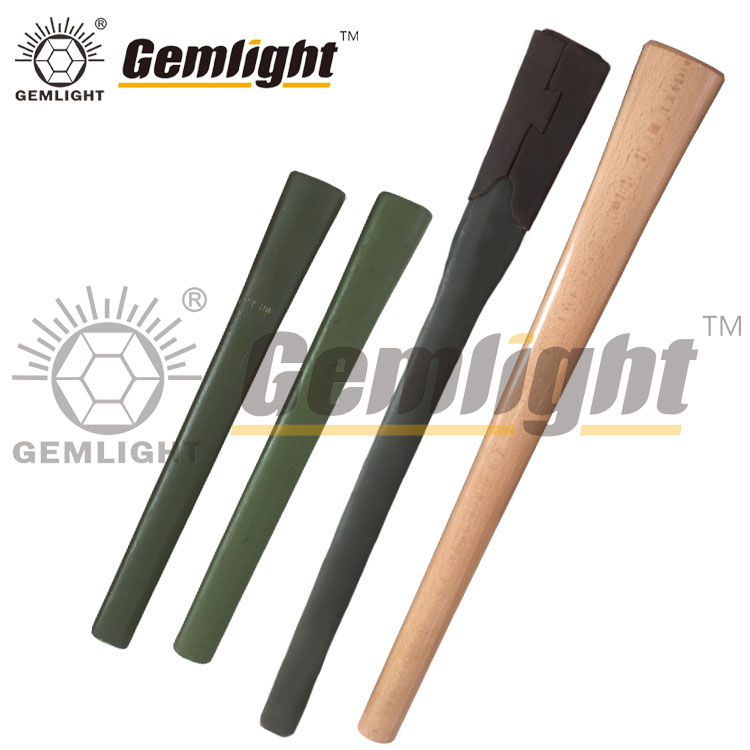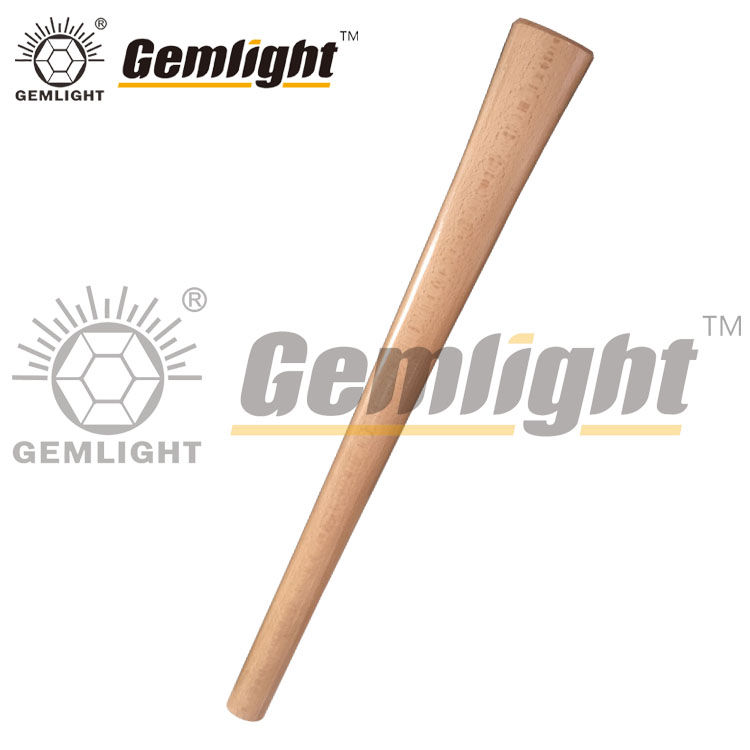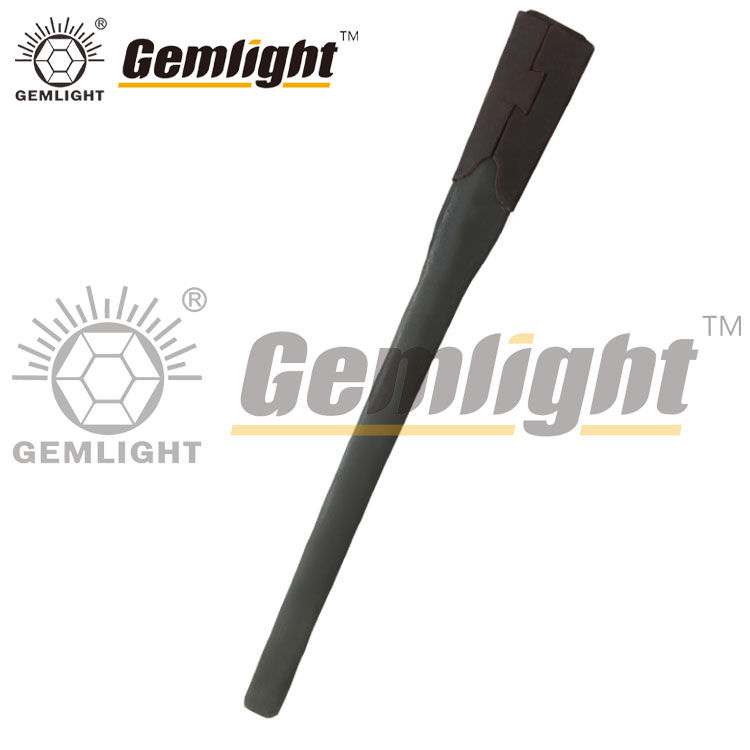News
In Africa, where agriculture and infrastructure development form the backbone of many economies, the importance of reliable and durable tools cannot be overstated. Among these, the pickaxe remains an essential implement for farmers, construction workers, and miners alike. Central to the effectiveness of this tool is the pickaxe handle, which plays a crucial role in ensuring both performance and user safety.
African soils vary widely — from the compacted, rocky terrains of East Africa to the arid, sandy conditions of the Sahel region. These challenging environments demand tools that can withstand heavy use without failure. A high-quality pickaxe handle absorbs shock, provides a secure grip, and endures environmental factors such as heat, humidity, and frequent exposure to dust and dirt. Inferior handles are prone to cracking, splintering, and loosening from the head, which not only decreases productivity but also raises safety risks for workers.
Additionally, the ergonomic design of a pickaxe handle directly impacts labor efficiency. Handles that are too short or poorly balanced lead to premature fatigue and reduced precision, whereas well-designed handles maximize leverage and control. For African professionals relying on manual labor, such improvements translate to significant time and cost savings.
Understanding the role and importance of a quality pickaxe handle lays the foundation for making informed purchasing decisions. Whether for commercial farming enterprises or smallholder operations, investing in premium pickaxe handles tailored to local working conditions ensures long-term durability and better outcomes in the field.

Selecting the right pickaxe replacement handle requires careful consideration of several factors, especially in the diverse agricultural and construction landscapes of Africa. The first step is to assess whether replacement is necessary. Signs like cracks, loose fittings, splinters, or warping indicate that the handle no longer provides safe or efficient operation and must be replaced immediately to avoid accidents.
Material choice is paramount. Traditionally, African pickaxe handles have been made from hardwood species like white ash or hickory, valued for their natural shock absorption and strength. These woods are locally available in some regions, but supply limitations and inconsistent quality often pose challenges. Modern alternatives such as fiberglass or composite reinforced handles have gained popularity due to their resistance to moisture, heat, and insect damage — all relevant in tropical and sub-Saharan climates.
Another important consideration is the handle’s length and shape. The market in Africa often prefers longer handles, typically ranging from 36 to 48 inches, to provide greater leverage and reduce the physical strain on users. The handle’s grip should accommodate prolonged use without causing blisters or hand fatigue, making surface texture and ergonomic contouring vital features.
Compatibility is also critical. Replacement handles must match the specific pickaxe head style to ensure a secure fit. Poorly matched handles risk detachment during use, creating hazardous situations. For businesses and distributors, the availability of standardized, interchangeable pickaxe replacement handles facilitates easier inventory management and customer satisfaction.
Cost-effectiveness cannot be overlooked. Buyers seek a balance between affordability and durability, especially for bulk procurement serving commercial farms or cooperatives. Understanding the trade-offs between cheaper materials and long-term reliability helps buyers make strategic purchasing decisions.

With over 30 years of expertise in manufacturing agricultural tools, our company is committed to delivering pickaxe handles engineered specifically for the demanding African market. Our long handle pickaxe products combine durability, comfort, and adaptability, meeting the rigorous standards of both professionals and rural workers.
Our solid wood pickaxe handles are crafted from premium hardwoods such as white ash, carefully selected for their toughness and natural shock resistance. These handles undergo precise curing and treatment processes to withstand seasonal temperature fluctuations and high humidity typical in many African regions. The classic long handle pickaxe model provides excellent leverage, making it ideal for digging, breaking hard soil, and construction work.
In addition to traditional wooden handles, we offer advanced fiberglass-reinforced pickaxe replacement handles. These handles excel in resisting moisture, UV degradation, and insect damage, extending the tool’s lifecycle significantly. Their lightweight nature improves user comfort without sacrificing strength, a critical factor for labor-intensive tasks over extended periods.
Recognizing the need for customization, we provide OEM and private-label services, allowing customers to tailor handle lengths, shapes, and branding to suit local preferences and business needs. Our long handle pickaxe options come in various sizes from 36 to 48 inches, catering to diverse work requirements and user ergonomics.
Our satisfied clients across Kenya, Nigeria, Ghana, and Tanzania consistently report increased productivity and fewer tool failures after switching to our pickaxe handles. We also support bulk orders with competitive pricing and reliable delivery, enabling distributors and cooperatives to stock high-quality replacement handles that meet their customers’ expectations.

Proper maintenance of your pickaxe tools is essential to maximize its lifespan and ensure continued safe operation. In African climates, where extreme heat, humidity, and dust prevail, taking simple yet effective measures can prevent premature wear and costly replacements.
Always store pickaxes in a dry, shaded area when not in use to avoid warping or rot, particularly for wooden handles. Avoid leaving tools exposed to direct sunlight for prolonged periods, as ultraviolet rays degrade both wood and fiberglass materials. Regularly clean the handle to remove dirt and sweat, which can cause surface deterioration.
Inspect your pickaxe handle frequently for signs of damage, including cracks, splinters, or looseness at the connection point with the pickaxe head. Early detection allows for timely replacement before accidents occur. It is advisable to schedule routine checks at least monthly for high-usage tools and before peak agricultural seasons.
When replacing the handle, ensure you follow correct installation procedures. Proper fitting, including secure wedging and tightening, guarantees the pickaxe head remains firmly attached during rigorous use. For bulk buyers, sourcing pickaxe replacement handles from reputable manufacturers like us ensures compatibility and quality assurance.
We also offer comprehensive after-sales support, including technical guidance for installation and maintenance, to help our customers optimize their tool investments. For large-scale operations, our supply chain solutions include timely delivery and flexible payment terms, simplifying ongoing procurement of pickaxe for sale .
In conclusion, combining informed selection with diligent maintenance practices ensures that your pickaxe handles remain dependable workhorses, enhancing productivity and safety in the demanding environments characteristic of African agriculture and construction.

 Sitemap
Sitemap